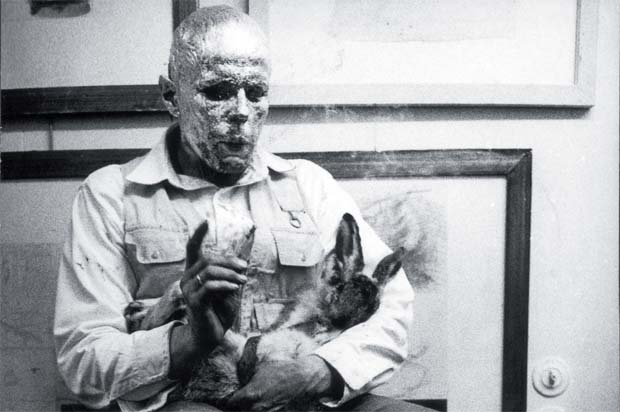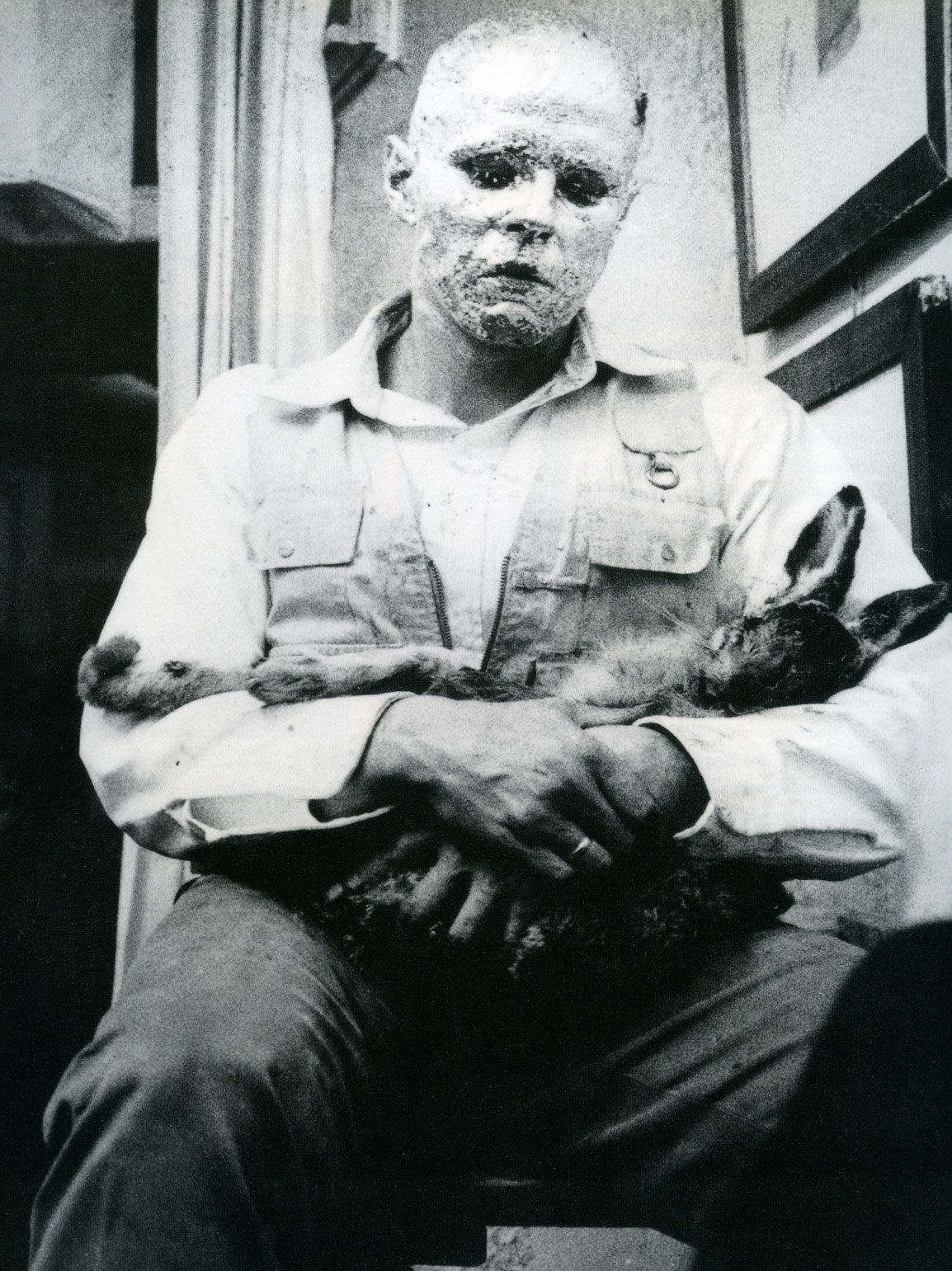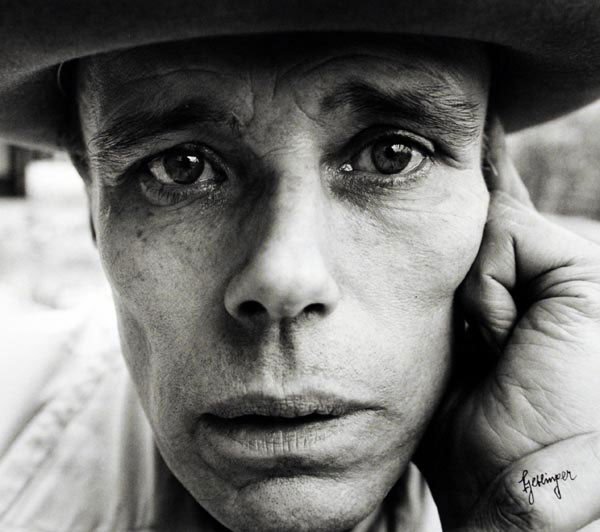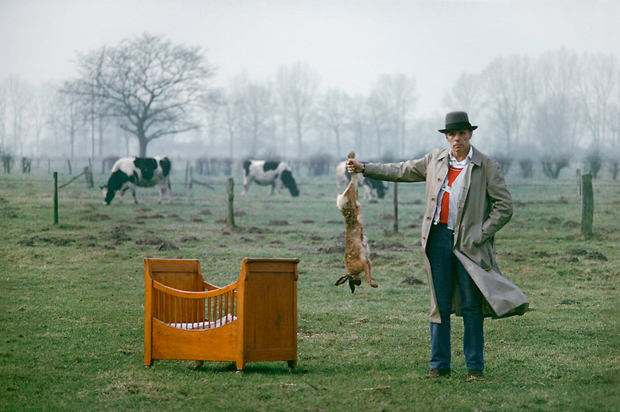
Why Joseph Beuys and his dead hare live on
New Phaidon Focus book looks (among other things) at the importance of his mysterious 1965 performance
Performance is one of the more ephemeral forms of contemporary art, gone from the gallery once it has happened. However, some performance works are so important, other artists compelled to recreate them.
A few weeks ago, as part of its retrospective dedicated to the Italian artist Vettor Pisani, the Museo Madre in Naples presented a kind of performance-art cover version. The museum staged a recreation of Pisani's 1976 performance, The Hare Does Not Like Joseph Beuys, which is itself an interpretation of Beuys's own seminal 1965 performance, How to Explain Pictures to a Dead Hare.

Beuys, as the new Focus book points out, is one of international art's most polarizing figures. Steeped in the esoteric philosophy of German mystic Rudolf Steiner, he adopted a shaman-like persona as a vehicle for enigmatic performances that enthralled some but led others to dismiss his work as cultish sensationalism.
Challenging sculptural conventions with unorthodox materials - such as bee's wax, fat, felt and dead animals - Beuys pushed the boundaries of what constitutes art, declaring "everyone is an artist" and coining the term 'social sculpture' to encapsulate his anarchic programme for transforming society.
To understand the importance of How to Explain Pictures to a Dead Hare, one of his most infamous pieces, let's turn to our new addition to the Phaidon Focus series, written by Allan Antliff and dedicated to the late German artist.
"How to Explain Pictures to a Dead Hare (Wie man dem toten Hasen die Bilder erklärt) was a solo performance by Beuys, who was filmed and photographed for three hours as he moved through the Schmela Gallery exhibition with the carcass of a hare, whispering inaudibly to it. His entire head was covered in honey and gold leaf; a felt sole was tied to his left foot, and an iron sole was tied to his right. The Action ended with Beuys seated on a stool with one of its legs wrapped in felt (a bone and wire 'radio' was placed underneath the seat), protectively cradling the deceased hare in a manner akin to the Madonna in a pietà.

Beuys covered his head with honey - a nurturing substance unique to the creative powers of bees - in order symbolically to associate the bee's capacities with his own efforts to expand the human potential for thought and expression beyond the rational, so as to 'communicate' (on some level) with the hare. The gold flakes called attention to Beuys's role as a life-giving artist whose 'artistry', like that of the bee, was analogous to the sun's radiant, all-encompassing powers. The application also intensified the ritualistic tenor of the performance by masking Beuys's features, in keeping with his intermediary role as shamanistic medium in communication with the hare's spirit-being. The hare, according to Beuys, stood in for our 'deadening' intellectualizing tendencies to burrow (metaphorically) into the 'materialistic'. However, the hare's ability to transform the earth into a habitat that accorded with its body shape was also a creative act. Humanity and hares, Beuys suggested, have more in common than one might imagine:

"[The hare] has a strong affinity to women, to birth and to menstruation, and generally to chemical transformation of blood. That's what the hare demonstrates to us all when he hollows out his form: the movement of incarnation. The hare incarnates himself into the earth, which is what we human beings can only radically achieve with our thinking: he rubs, pushes, and digs himself into Materia (earth); finally penetrates (hare) its laws, and through this work his thinking is sharpened then transformed, and becomes revolutionary.
'Even a dead animal', Beuys mused in a statement on his Action, 'preserves more powers of intuition than some human beings with their stubborn rationality.' Human thinking was capable of achieving so much, but it could also 'be intellectualized to a deadly degree, and remain dead, and express its deadliness in the political and pedagogical fields' (Beuys did not specify to which political movements or pedagogical practices he was referring). He then speculated that many were enthralled by the work, which had proved to be a media sensation, precisely because their imaginations were stimulated, allowing them to transcend rationalism in favour of 'mystery or questioning'. His art was yielding results."
We hope you've enjoyed this insight into an important work by this seminal artist. For more on Beuys, please pre-order a copy of our forthcoming Phaidon Focus book here.